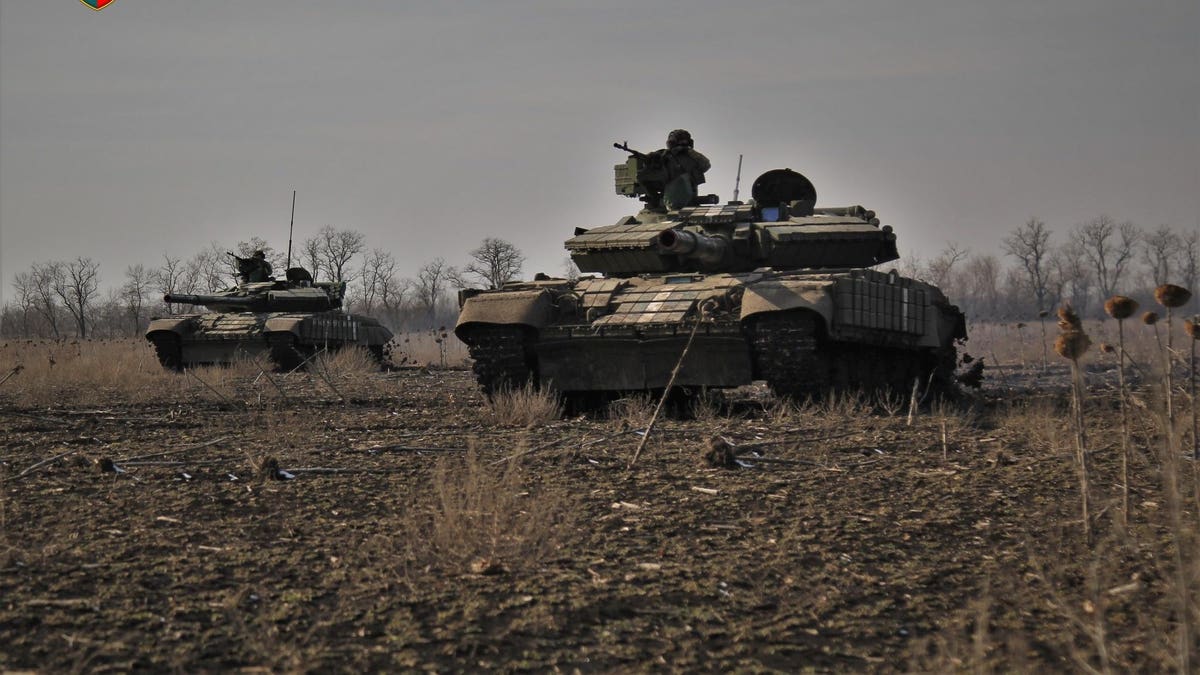Tanks rarely operate alone. That’s because, for all their firepower and protection, tanks have vulnerabilities. Their armor is thin on top, on the bottom and in the back. Even on tanks with separate sights for the commander and gunner, visibility is limited.
Which is why tanks work best in combined-arms formations alongside infantry, engineers, aviation and artillery. Infantry can protect the tanks’ flanks while engineers clear mines and aviation and artillery suppress enemy anti-tank missile teams and artillery.
But sometimes you’ll see a tank go it alone or in a small team with another few tanks—moving and firing fast then withdrawing before the enemy can exploit the tanks’ weaknesses.
These shoot-and-scoot raids are risky. But they can be an effective way of reconnoitering and shaping a battlefield ahead of a larger combined-arms assault. Ukrainian marine corps brigades seemingly deployed at least one of their tanks in a shock raid in advance of their successful assault on the Russian garrison in Urozhaine last week.
A dramatic video that appeared online on Tuesday depicts a pair of Ukrainian tanks—possibly speedy, gas-turbine T-80BVs—rolling south through the fields between the Mokri Yaly River and the northwestern edge of occupied Urozhaine. As a Ukrainian drone observes, one of the tanks splits off, accelerates and races along tracks that other vehicles already have cleared through the minefields around Urozhaine.
The tank shoots on the move, its crew ignoring nearby artillery explosions—including one that seems to detonate a buried anti-tank mine—as it turns a wide circle just beyond the outermost Russian positions in Urozhaine. The tank disappears as fast as it appeared, having probed and prodded Russian defenses … and survived.
The Ukrainians knew what they were doing. “Tanks can be employed on mechanized raids to destroy enemy installations and facilities, disrupt enemy command-and-control or support activities, divert enemy attention and secure information,” the U.S. Marine Corps explained in one of its final field manuals for tank operations before it began shuttering its tank battalions three years ago.
“The tank’s ability to engage targets at extended ranges with precision surprises enemy forces,” the USMC added. “Additionally, the mobility and speed provided by the tank allows for rapid displacement once actions are complete.”
But don’t take the U.S. Marines’ word for it. The results of the Ukrainian marines’ solo tank ops speak for themselves. Four front-line brigades—that’s nearly the entire Ukrainian marine corps—flanked and squeezed the Russian garrison in Urozhaine.
And this weekend, the garrison’s survivors broke and fled, on foot, along the one escape route still available to them: the main T0518 road leading south from Urozhaine toward neighboring Zavitne Bazhannya and Staromlynivka.
Ukrainian artillery caught the Russians out in the open—and massacred them with cluster shells.
Read the full article here





